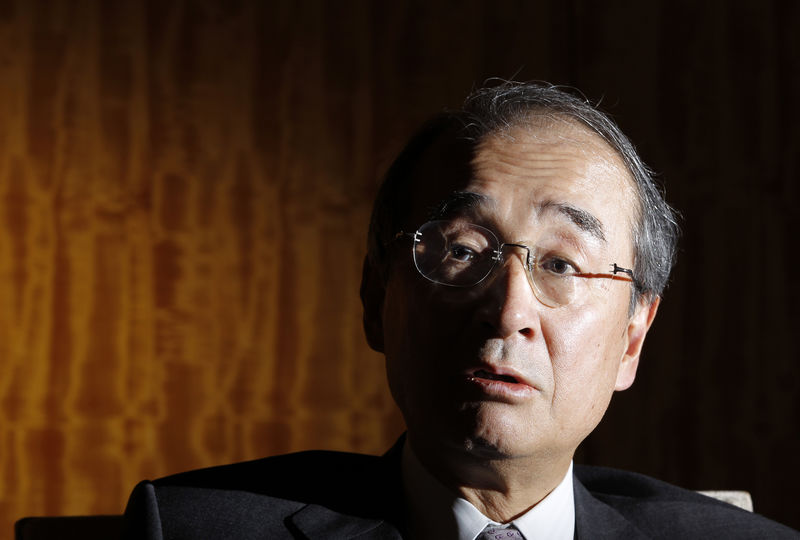 © Reuters. To match Interview JAPAN-ECONOMY/BOJ
© Reuters. To match Interview JAPAN-ECONOMY/BOJBy Leika Kihara
TOKYO (Reuters) – Japan’s healthy economic growth should allow its central bank to whittle down its massive stimulus program, even before inflation hits its 2 percent target, Koji Ishida, a former Bank of Japan board member, said.
Ishida, originally a commercial bank executive before joining the BOJ board, said the central bank’s recent move to make its stimulus more sustainable was long overdue, given the hit to regional banks’ profits from ultra-low rates.
Stubbornly low inflation has forced the BOJ to maintain its ultra-easy policy in recent years despite concerns about the side-effects of such policy on markets and the banking system.
“The inflation target is a mechanism to achieve the BOJ’s mandate stipulated in law, which is to stabilize prices for sound economic development,” Ishida told Reuters on Tuesday in his first media interview since leaving the BOJ in 2016.
“The BOJ wouldn’t persist in maintaining its current policy until 2 percent inflation is met. The board will likely make a flexible policy decision, even before the price target is met.”
In a nod to industry concerns about extremely low interest rates, the central bank last month made tweaks to its monetary settings to allow bond yields to move more flexibly around its target of around zero percent.
The BOJ, however, will take plenty of time before allowing long-term rates to rise to avoid stoking market speculation that it was eyeing a near-term exit from easy policy, Ishida said.
“The BOJ likely won’t rush in trying to steepen the yield curve for the time being. But it’s clear it will attempt to do so” once markets stabilize, he said.
TURNING POINT
Ishida voted for Governor Haruhiko Kuroda’s decision in 2013 to deploy a huge asset-buying program – dubbed “quantitative and qualitative easing” (QQE) – aimed at achieving 2 percent inflation in a country mired in two decades of deflation.
But he dissented to a decision to expand QQE in 2014 and the adoption of negative interest rates in 2016, questioning whether much such moves would help stoke inflation.
As Ishida predicted, inflation failed to fire up and forced the BOJ to revamp its policy framework in 2016 to one better suited for a long-term battle to hit its price goal. Under the new policy, the bank now guides short-term rates at minus 0.1 percent and long-term rates around zero percent.
The BOJ missed an opportunity to make its policy more flexible in 2014, when it expanded QQE even though its effect in boosting inflation expectations proved short-lived, Ishida said.
“It was a turning point. It was a moment when the BOJ could have made its policy a more stable, sustainable one,” he said.
The BOJ’s prolonged ultra-easy policy is hurting profits at regional banks, already hit by a dwindling population and a lack of borrowers as companies relocate to bigger cities.
Ishida said Japan’s crowded banking system is prone to consolidation as too many banks are competing for a dwindling pool of borrowers.
“The BOJ’s massive monetary easing has pushed forward quite a bit the timing for such consolidation to take place,” he said.
The BOJ’s huge asset purchases is also making the central bank’s balance sheet vulnerable to future losses, Ishida said.
“There’s a risk public trust in the BOJ’s policy handling will be hurt if the central bank incurs big losses,” he said.
“The BOJ is probably making preparations to ensure this does not happen. But this is something that concerns me greatly, as someone who agreed to deploying QQE.”
Source: Investing.com




























